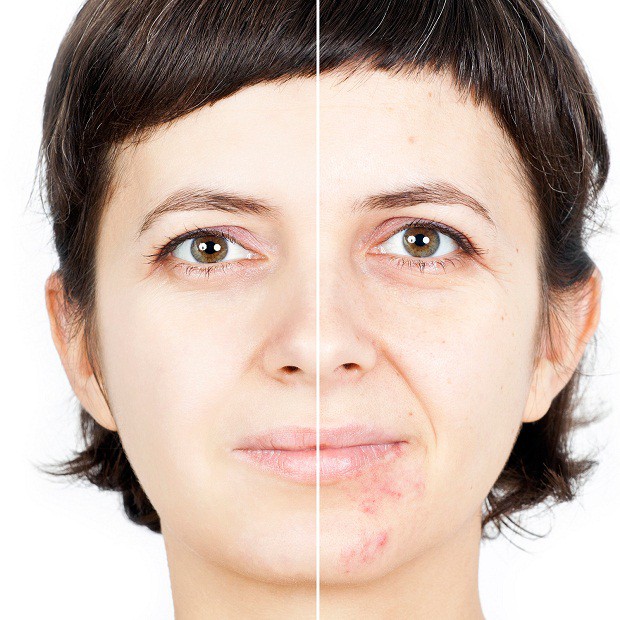There are three different types of scars; red, raised and indented. Fresh facial scars are usually red and fade gradually to flesh color as time passes. Although they are usually permanent in most cases, people don’t have to suffer from visible scarring. All kinds of imperfections can usually be covered up with the help of makeup. However, the trick is to cover each scar after classifying it into a specific type and then using the appropriate makeup product for it.
Discussed here are steps for dealing with the different kinds of facial scars:
Red Scars
- Apply the color theory for choosing the right product that should be applied onto the red scars. According to the color theory, mixing a color with its opposite one on the color wheel will neutralize both the colors. This means that for dealing with red scars, people need a green-tinted concealer or primer.
- Use your foundation brush or fingers for applying the primer or concealer only where red scarring is visible. Allow the concealer to dry and only apply a second coat if needed.
- Use a foundation that matches your skin tone and apply it onto the face, but blend it onto the ears, the hairline, over the eyelids and also the neck for achieving a seamless look.
Raised Scars
- Lighter areas seem to be closer than darker areas; use this principle for hiding raised scars. This effect can be achieved with two products; a concealer that’s slightly darker than your skin tone and a concealer that’s slightly lighter than it in order to ensure that the scars are not visible to the naked eye.
- The skin should be prepared by applying foundation that matches your skin tone all over the face and on the neck as well to achieve a smooth look, without making your face and neck appear different.
- Apply the light concealer on the area around the scar with the help of your fingers and blend it away from the scar and into the surrounding skin. The dark concealer should be applied onto the scar directly and should only be blended slightly.
Indented Scars
- An anhydrous foundation should be applied onto the skin for covering up indented scars. As compared to regular liquid foundation, this one has a firmer consistency and can fill up the minor imperfections.
- The regular foundation should be applied on the rest of the skin and the edges of the regular foundation should be blended with the edges of the anhydrous foundation.
- In order to hold the foundation in place, a mineral powder should be applied onto the face with the help of a fluffy powder brush. If your skin is very dry then its best to skip the powder. However, if powder is not used then people would need to apply both the foundations sooner than otherwise.
These instructions can be used according to the type of scar you have and people can easily hide the imperfections of their skin, as long as they follow the steps and use the products outlined above.


